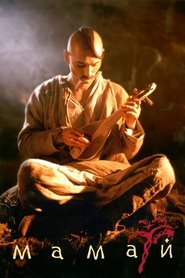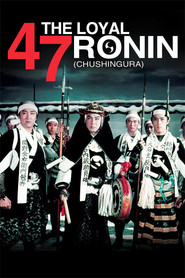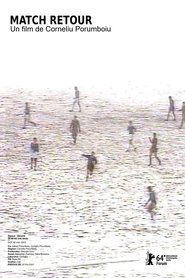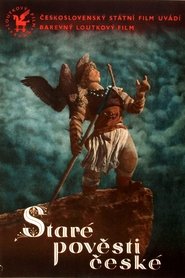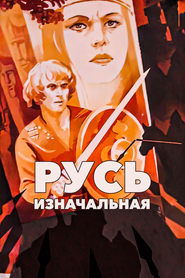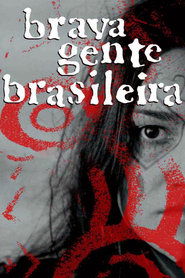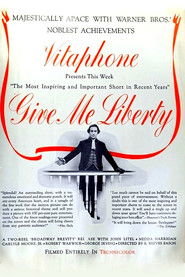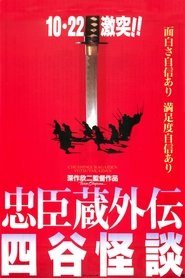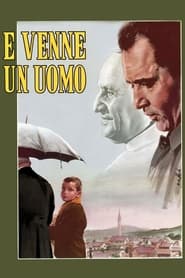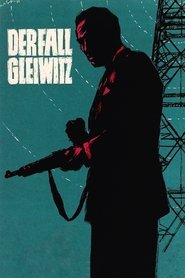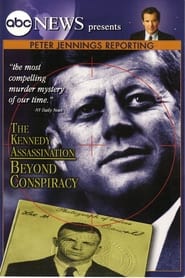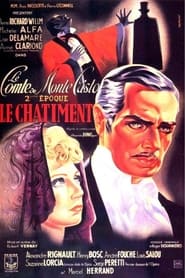Top Rated History Movies - Page 171
-
Race d'Ep!
1979
Race d'Ep!
1979
star 4.8"Race d’Ep!" (which literally translates to "Breed of Faggots") was made by the “father of queer theory,” Guy Hocquenghem, in collaboration with radical queer filmmaker and provocateur Lionel Soukaz. The film traces the history of modern homosexuality through the twentieth century, from early sexology and the nudes of Baron von Gloeden to gay liberation and cruising on the streets of Paris. Influenced by the groundbreaking work of Michel Foucault on the history of sexuality and reflecting the revolutionary queer activism of its day, "Race d’Ep!" is a shockingly frank, sex-filled experimental documentary about gay culture emerging from the shadows. -
The Life and Loves of Beethoven
1937
star 6.9Lyrical biography of the classical composer, depicted as a romantic hero, an accursed artist. -
Mamay
2003
Mamay
2003
star 6.1Mamay draws on traditional Ukranian and Tatar folktales for its Romeo and Juliet-like love story and parable about chivalry and the struggle for freedom. Hundreds of years ago, in the wild steppes of Crimea that form an uneasy border between East and West, Europe and Asia, nomad and farmer, the proud Cossack Mamay falls in love with the Tatar beauty Omai. The title, like the storyline, holds a variety of different meanings taken from different cultures. In Turkic languages, it means "no one," but it was also the name of a famous Mongol conqueror, the great grandson of Ghengis-Khan. In Persian legends, mamay literally means "the spirit of the steppes. " -
The Loyal 47 Ronin
1958
The Loyal 47 Ronin
1958
star 6Japan, 1701. A group of samurai become rônin after their lord is forced to commit seppuku for assaulting a court official, who will become the target of a merciless revenge. -
The Second Game
2014
The Second Game
2014
star 5.6A deceptively simple set-up: the director and his father watch a 1988 football match which the father refereed, their commentary accompanying the original television images in real time. A Bucharest derby between the country’s leading teams, Dinamo and Steaua, taking place in heavy snow, one year before the revolution that toppled Ceaușescu. -
Old Czech Legends
1953
Old Czech Legends
1953
star 6.4A monumental piece of art bringing the heroes of the ancient Czech myths back to life. The picture consists of seven parts: Cech the Forefather, Bivoj, Libuse, Premysl, Girls War, Horymir, Lucka War. -
Primary Russia
1986
Primary Russia
1986
star 4.6The film takes place in pre-Christian Russia, when Ratibor united the East Slavs into one army against the nomadic Khazars. -
Die Pilgerin
2014
Die Pilgerin
2014
star 5.3In the 14th century, a young merchant's daughter from southern Germany sets off on the adventurous Way of St. James to faraway Santiago de Compostela to fulfill her father's last wishes and bring his heart there. Disguised as a man, the pilgrim is hunted by pursuers set on her by her conniving brother. -
Brave New Land
2000
Brave New Land
2000
star 5.2Diogo is a cartographer and artist who is encharged to set the new frontiers of Portuguese Colonies in South America. When he reaches the center of the continent, finds apparently nothing but wilderness and ‘uncivilized’ natives with strange ways of living. But Captain Pedro, the rude scout who guides him through the jungle, involves Diogo in an involuntary act of violence which will tie him in an unusual way to that far away country. At the same time, the Portuguese colonists are trying to make peace with Guaicuru Indians (one of the few natives with horse-riding abilities). But peace doesn’t ever have a low price. -
We Are from Kronstadt
1936
star 4.6In 1919, during the post-revolution Russian Civil War, a naval detachment (made up of communist Reds) defends the strategic city of Petrograd from the White Russian counterrevolutionary forces -
Give Me Liberty
1936
Give Me Liberty
1936
star 6.1Patrick Henry's rousing speech before the Virginia legislature argues for colonial independence. -
The Long Way Home
2013
The Long Way Home
2013
star 6.7Inhospitable at the best of times, the snow-covered mountainscapes of Eastern Anatolia constituted a fatal frontier for many war exiles after the battle of Sarikamish in 1915, and provides a canvas laced with beauty and threat for this bone-chilling survival yarn, the superb debut feature of Alphan Eşeli. Starting out with three characters – a refugee mother and daughter and their grizzled guide – the film traces their daunting trek across this barren terrain to safety, with the Russians encroaching and other stragglers, including a pair of wounded, frostbitten Ottoman soldiers, all orbiting the same burnt-out village they find in their path. Puncturing its aura of ghostly impasse with some shocking narrative reversals, and constantly prickling with the mutual dread of strangers in gruelling extremes, the movie stakes out hugely credible ground next to established Eastern Front war classics (In the Fog, Come and See) while remaining thoroughly its own beast. (Source: LFF programme) -
Crest of Betrayal
1994
Crest of Betrayal
1994
star 6.1Weaving two storylines together: the first is the story of 18th-century shogunate intrigue and loyalty, and the second is a ghost story about a beautiful woman who falls victim to passion and evil. -
Becoming Colette
1991
Becoming Colette
1991
star 3.7French writer recalls her start as the country wife of a Paris publisher who called her erotic work his own. -
A Man Named John
1965
A Man Named John
1965
star 6.3Based on the diary Pope John XXIII kept between the ages of 14 and 18, his lifelong concern for tolerance, the underprivileged, and world peace is told. Rod Steiger, in the central role, acts as "intermediary" between the Pope and the audience, interpreting John's words, thoughts and actions. Steiger visits the actual places in which John lived, recreating the conditions, environment, and forces that affected his development. Through this unusual technique, we are brought close to an extraordinary man - one who's able to win the love of many people of all faiths. -
Réquiem NN
2013
Réquiem NN
2013
star 5.6Requiem NN is a film about a ritual of resistance of the people of Puerto Berrio, Colombia, who have lived continuous cycles of violence for many decades. The recovery of the bodies from the Magdalena River, their burial, the favors people ask from the souls of the NN (NO Names), the baptizing given to this unknown corpses, is the collective ritual that has taken place for over 30 years. Juan Manuel Echavarria began photographing the graves in Puerto Berrio in November 2006 and this film is one of the results of this investigation. -
Locura de amor
1948
Locura de amor
1948
star 4.9The passion that Joan of Castile, daughter of the Catholic Kings and heir to the throne, feels for her husband, Philip the Handsome, sovereign of the Netherlands and son of Maximilian of Austria and Mary of Burgundy, is not reciprocated. Her temperament, her jealousy and an unexpected tragedy will throw Joan into the dark realm of madness and obsession with death, the only realm where she will be a true queen… -
The Gleiwitz Case
1961
The Gleiwitz Case
1961
star 6.6Re-enacted true story of successful assault by Nazis, posing as Poles, on a German border radio station so that Hitler could "justify" thereby his invasion of Poland. -
Peter Jennings Reporting: The Kennedy Assassination - Beyond Conspiracy
2003
star 6.4Forty years after the assassination of John F. Kennedy, more than 80% of Americans still believe that Lee Harvey Oswald did not act alone. This documentary attempts to separate fact from conspiracy theories to get to the truth, employing stunning forensic technology that makes it possible for the first time to be an eyewitness to this crime of the century – to see precisely what happened that November day in Dallas. -
The Count of Monte Cristo Part 2 - The Retaliation
1943
star 5.8Having found the fabulous treasure of which Abbé Faria had spoken to him, Dantès has only one idea left: revenge. He will succeed patiently, but will not however have the heart to break the poor Mercedes. Then he will leave for the East, accompanied by a lovely Levantine, Haydé, who served him to accomplish his revenge.
 Netflix
Netflix
 Amazon Prime Video
Amazon Prime Video
 Apple iTunes
Apple iTunes
 Apple TV Plus
Apple TV Plus
 Disney Plus
Disney Plus
 Google Play Movies
Google Play Movies
 Paramount Plus
Paramount Plus
 Hulu
Hulu
 HBO Max
HBO Max
 YouTube
YouTube
 fuboTV
fuboTV
 Peacock
Peacock
 Peacock Premium
Peacock Premium
 Amazon Video
Amazon Video
 The Roku Channel
The Roku Channel
 AMC+
AMC+
 Kocowa
Kocowa
 Hoopla
Hoopla
 The CW
The CW
 Vudu
Vudu
 Starz
Starz
 Showtime
Showtime
 PBS
PBS
 Pantaflix
Pantaflix
 FXNow
FXNow
 Tubi TV
Tubi TV
 Kanopy
Kanopy
 Comedy Central
Comedy Central
 Crunchyroll
Crunchyroll
 Microsoft Store
Microsoft Store
 Redbox
Redbox
 Sun Nxt
Sun Nxt
 ABC
ABC
 DIRECTV
DIRECTV
 Crackle
Crackle
 Fandor
Fandor
 Plex
Plex


